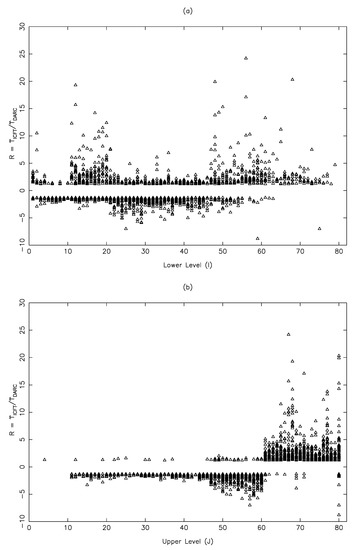
- ZMATRIX REFERENCE ATOMS SUGGESTIONS HOW TO
- ZMATRIX REFERENCE ATOMS SUGGESTIONS PDF
- ZMATRIX REFERENCE ATOMS SUGGESTIONS SOFTWARE
- ZMATRIX REFERENCE ATOMS SUGGESTIONS FREE
Molden has a complete, if idiosyncratic graphical Z-matrix editor. 1.0 Ångström is traditional as far as I know.
ZMATRIX REFERENCE ATOMS SUGGESTIONS FREE
These atoms are usually denoted $\ce$ bonds to be of equal length is probably an unrealistic constraint for a geometry optimisation of this system.įinally, note that dummy atoms do not take part in the electronic structure of a molecule, so feel free to put them in anywhere and set the dummy atom 'bond' length to whatever you want. To solve this, you can add ' dummy atoms' which provide an auxiliary point of reference to remove the 180 degree angle. This is because the dihedral becomes degenerate. Mikolaj, that is a complex question that you should pursue with a vigorous lit search.You cannot have bond angles of 0 or 180 degrees in a Z-matrix.
ZMATRIX REFERENCE ATOMS SUGGESTIONS SOFTWARE
Do you think, that crystallography structure is good (experimental) reference point for comparing with computed results? My software (Gaussian) does geom optimization in gas phase, crystallography geometry is in solid state, i’m confused if it is good idea to compare those 2 results. I am also doing some studies on comparing geometries obtained using different basis set. Always nice to have corroboration!Īnyway, it’s a really nice program and maybe you should ask for it from him if you need a raw comparison of two geometries. This is a much more elegant and simple program than mine, but doesn’t allow you to see which parts in the geometry are actually wrong (or ignore unimportant errors), which I need to be able to do.Īnyway, his and my program made the same (qualitative) results about which level of theory and basis set I should be using for my calculations. Julius Su, in the Goddard lab at Caltech, emailed me a copy of his C++ program that first rotates two molecules (rigidly), then calculates the root-mean-squared distances between all the atoms. %Now copy the three columns of absolute differences and paste into is included in the Z-matrix internal coordinate format as atoms may be. %This separates the three types of values by when in the column theyĭiff_bondlengths=ĭiff_angles= The second reference structure will be a computationally derived TS or a high. composed of the atoms and Cartesian or Z-matrix you need more details, refer to the Gaussian.
ZMATRIX REFERENCE ATOMS SUGGESTIONS PDF
%Need the transform of the result of the above loop: PDF Gaussian 09W Reference - Central Washington University. atom), irrespective of whether using Zmatrix internal coordinates or. %This loop corrects for angles larger than 180: The official citation for version 3 releases of Q-Chem is a journal article that. These read in the variables at the end of theĭifference_uncorr=abs(reference-calculation) Use the z-matrix that Molden outputs (e.g. %correct these far negative angles to their corresponding positive angles %Molden defines a dihedral of -190 as +170. %original crystal structure z-matrix to the calculation. %dihedrals are defined the same (I was having trouble comparing the %compare the starting structure to the optimized structure (before and %Because I used the crystal structure as the starting z-matrix, I can %Z-matrix Editor in Molden, click “US” and “Gaussian,” then save the %at a file this prevents Molden from rewriting the z-matrix. Be sure to use “molden -A ‘structure'” when looking %differences in the bond lengths, angles, and dihedrals directly from a %different levels of theory or different basis sets. %This program compares the z-matrices for multiple QC calculations using

Let me know if you find errors or if you find ways to make it better. If you want to check it out or try it, I’ll post it below. The total number of hydrogens bonded to the atom or molecule.
For instance, I remove the dihedrals that don’t really matter (some light atoms and some artificially inflated dihedral errors) and just look at the mean and standard deviation for different method/basis set combinations.Then I just throw those outputs into SigmaPlot or Excel ( ew!) or whatever and do the error analysis I want. It just imports the variables from a Molden z-matrix and takes the absolute difference in them, sorting my type. It’s not perfect, I’m pretty happy with it. It took me a while to get what I wanted out of Molden and make MatLab spit out the right set of numbers, but I finally got it to do what I wanted (I think). So I wrote a MatLab M-file that outputs the absolute differences in the bond lengths, angles, and dihedrals between two structures.
ZMATRIX REFERENCE ATOMS SUGGESTIONS HOW TO
But I couldn’t find one, and I wanted control over how to compare the structures (for instance, I wanted to be able to ignore the errors in the dihedrals for light atoms). Now, there’s probably already a program out there that will compare the optimized structures of quantum-chemistry calculations (e.g.

The z-matrix representation uses coordinates relative to up to three atoms, which need not be bonded in any. Comparing gaussian structures at 12:53 am | sam | everyday science, software You must create or free OBAtom pointers yourself.


 0 kommentar(er)
0 kommentar(er)
